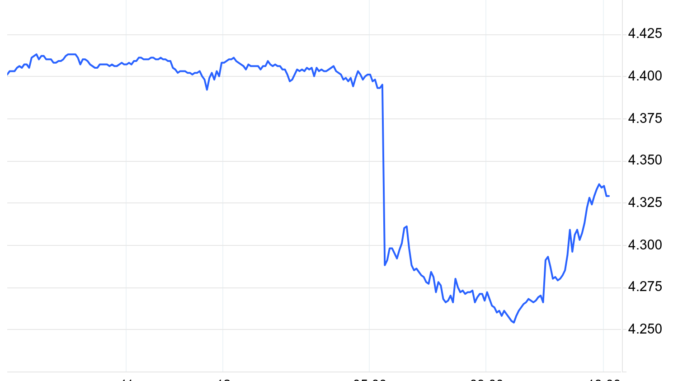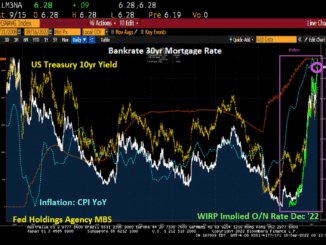
Today’s double event of the CPI inflation report and the Fed meeting gave us something that I have been waiting for: a hint from Fed Chairman Jay Powell that the labor market has softened. Today he acknowledged what I have been talking about for months: the Fed’s key data lines are at pre-COVID-19 levels today.
Before the Fed held its press conference, we got a softer-than-anticipated CPI report, which sent the 10-year yield (and mortgage rates) lower at first. Then, the Fed announced its policy and bond yields headed higher as Powell spoke. However, the 10-year yield finished the day lower. We have had some wild moves on key data lines lately, but we have itchy fingers from crowded trades, as shown in the 10-year yield below.
The ten-year yield, vital for mortgage rates, closed at a critical technical level today. However, we must remain vigilant, as we need to see softer economic data or a much softer PPI inflation print tomorrow morning to confirm this trend.
The PPI inflation report is critical because it filters more into the PCE inflation report later in the month, and that is the Fed’s preferred inflation data to track. As you can see below, we are again at this crucial level for the 10-year yield, so we shall see if this breaks lower.
We discuss Fed day in more detail on the HousingWire Daily podcast that drops tomorrow morning, but let’s first look at today’s inflation report because the CPI inflation report was a big surprise today.
From BLS: The Consumer Price Index for All Urban Consumers (CPI-U) was unchanged in May on a seasonally adjusted basis after rising 0.3 percent in April, the U.S. Bureau of Labor Statistics reported today. Over the last 12 months, the all items index increased 3.3 percent before seasonal adjustment.
The month-to-month inflation data shocked bond traders, hence the big waterfall dive with the 10-year yield right after the report. It wasn’t like rent inflation drove this lower either — the shelter inflation grew monthly, but other inflation data came in lower than anticipated. As you can see in the chart below, we have made some good progress on the year-over-year inflation data heading lower.



